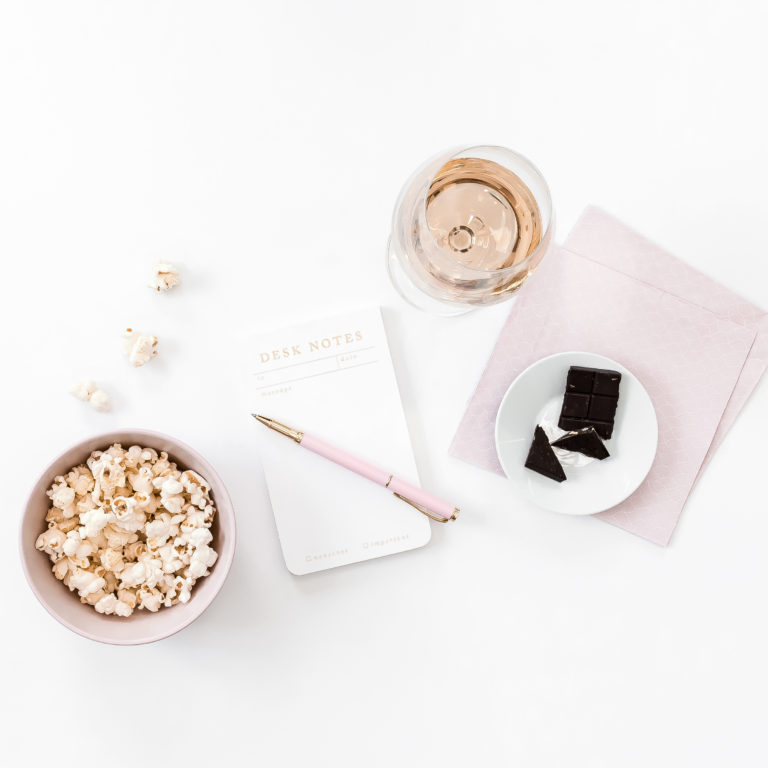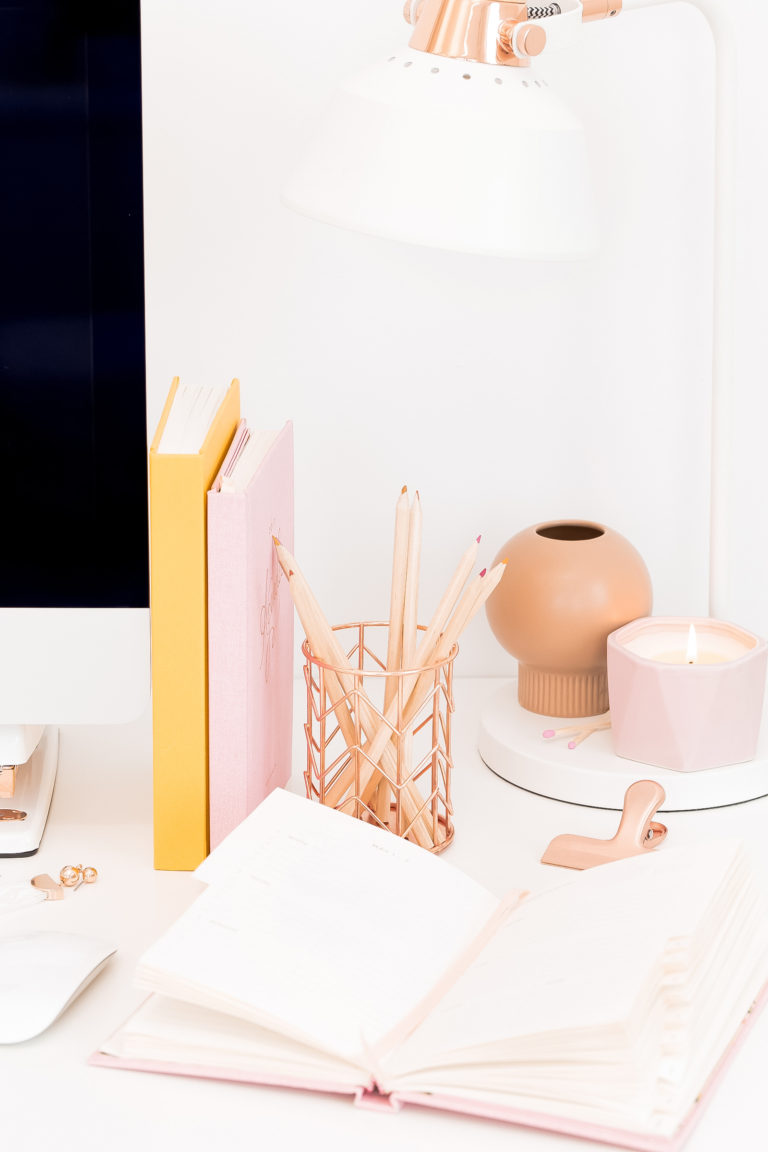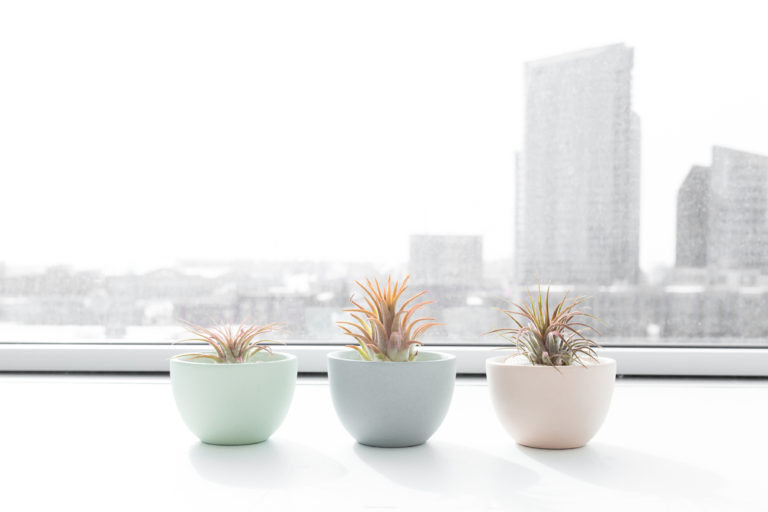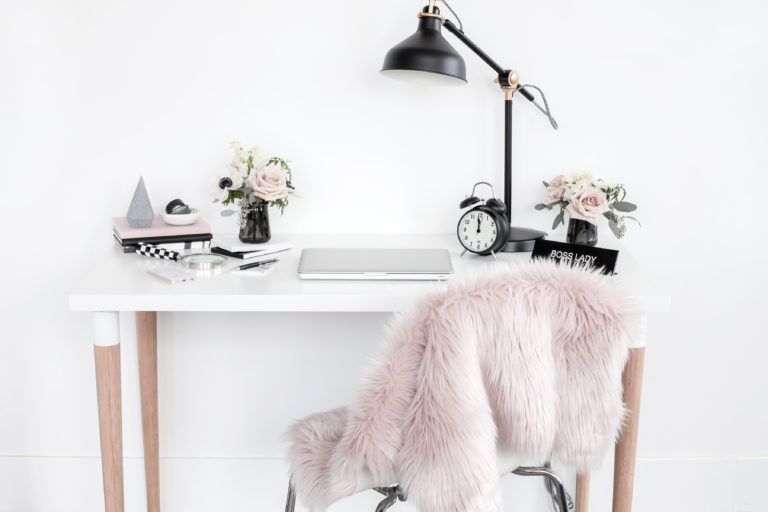The Super-Productive Hybrid Digital and Paper Planning System that Will Keep You Organized
As I’ve said before, I was a digital planner for years. My calendar and to-do list are constantly changing, and keeping everything in my phone makes it super easy. Why carry around a paper planner, I reasoned, if I can just keep everything in my phone?
That worked really well for me for years. But last year, I had some big goals to tackle. Then the pandemic hit. I had to admit that I was struggling to keep everything straight. Finally I conceded that I needed a paper solution for some planning tasks. It’s easier to track everything when it’s right in front of you, and humans do remember things better when they’re written down on paper.
So I embarked on a quest to develop a hybrid analog and digital planning system. One year later, I’m very pleased with how this has turned out. I will add the caveat that I now work from home full time, which significantly reduces the chances that I forgot my paper planner at home or at work. That being said, I really love this hybrid planning system and find that it’s very productive for me.
Digital Planning System
There are lots of things that I still plan digitally. If a planning category meets one of these criteria, I kept it digital:
- Changes frequently (e.g. meeting schedule)
- Needs to be shared with others
- Needs to integrate with other productivity software in some way
- Recurs and can be automated
- Likely to be needed on the go when I don’t have the paper planner handy
These planning categories met one of the above criteria and still live 100% in the cloud.
Calendar
Both my work and personal calendars are 100% digital. Sometimes I will make notes in my paper planner about upcoming time blocks, but very rarely. For the most part, my Outlook (work) and Google (personal) calendars are the calendars of record.
My work calendar changes multiple times per day so it’s my source of truth for the daily schedule. I block time on that calendar for deep work, exercise, and appointments. If it’s not on that calendar it’s not happening.
Although my personal calendar doesn’t change as often, I do share that calendar with my husband. It’s important to keep it digital so he can see what’s happening.
For both of my calendars, I also need to make changes on the go. When I’m at the doctor’s office, for example, I enter the next appointment right into my calendar on the phone. This ensures that I don’t schedule over anything AND that I don’t forget to put the appointment on the calendar. (Which I will, inevitably, forget if I wait until later.)
Process Lists, Shared Lists, and Lists with Links
I still keep many of my lists in Trello. There are some lists that I keep on paper, and I’ll talk about those later. For digital lists, I’ve found that I prefer to keep some types of lists in Trello.
First, I always keep process lists in Trello. This is for things that I’m tracking through a Kanban process or another process. For example, when I write an article for this site, there are a few steps I have to follow from writing, to editing, to posting. It’s helpful to me keep this in a Trello board with each step noted so I don’t forget something.
Second, I keep lists with a lot of links in Trello. My gift list is a great example of this. Usually I provide a link to gift ideas I have for myself and my family. This is much easier to do in a digital list. I also keep notes like size and color in a Trello card.
Finally, I also keep shared lists in digital format. This includes personal lists in Trello, like the gift list, which I often share with extended family. It also includes work lists, which I usually share in Microsoft Teams. Digital format is very helpful when many people need to see and/or edit a list.
Banking & Finances
My banking and financial planning is as digital as I can make it. I do all of my banking online and deposit checks via my bank’s mobile app. I’ve automated as many bills as I can, and my bi-weekly banking reminders are in Google calendar. Most of our saving and investing is automated, so each month the investment funds go straight from the checking account to the investment account. Of course, some stock statements still come in paper format but I am working to consolidate all of that into one brokerage account.
Paper Planning system
Over the last year, I’ve really gravitated toward keeping certain planning items in paper format. Although I still manage much of my life digitally, I have started keeping personal goals, tasks, and lists on paper. Take a look at which of my planning domains now live in analog format.
Goal Setting
Writing tends to help people – including me – get their thoughts flowing. That’s why I find it so helpful to use pen and paper for goal setting. First, I get a blank sheet of paper and start brainstorming ideas. Then I take another sheet of paper and start organizing my thoughts. First I make a rough cut of which goals are making the annual goal list. Then, I start categorizing them into quarters. I really like doing this on a blank sheet of paper because it takes the pressure off. I can cross out, rearrange, change my mind, or even start from scratch. No pressure to keep the planner pretty.
After I have a list of annual goals I’m happy with, THEN they go into my planner. I use the Full Focus Planner from Michael Hyatt and Company, which is very focused on goal setting. It’s perfect for my needs because it devotes a lot of space to goals and habits, with comparably little space to daily schedule (which is totally digital for me).
Weekly Planning
For me, the magic of planning is taking those big annual and quarterly goals and breaking them down into weekly and daily actions. It’s not hard to write a 50,000 word book if you just write 500 words a day for 100 days. That takes me no more than 10 minutes a day and results in a huge accomplishment at the end! The same is true for other goals.
I use the Full Focus planner to track my weekly and daily plans. At the beginning of each week, I look back at my quarterly goals and my week’s calendar. Then I set my big three for the week, as well as the rest of my task list. I really stay on track for the week when I can set my weekly intentions. Tying my daily and weekly plans back to my longer term goals means that I never lose sight of those quarterly and annual goals.
Daily Planning
In the Full Focus planner, each day has a two page spread. You list your daily top 3 and other tasks. The planner also has a column for the day’s schedule. I find this especially useful for time blocking. I don’t use it to track my day’s meetings, though.
The planner also has an entire empty notes page for each day. I don’t have a specific use for this page. I just use it to scribble notes as needed. This year I’m also using it for daily weight tracking and notes about my workouts.
Personal Lists
Right now, I have some small Hobonichi accessory notebooks that I’m using to keep personal lists. These are lists that don’t require links and don’t need to be shared with others. I am trying these notebooks because Sarah Hart-Unger from The Shubox, Best Laid Plans and Best of Both Worlds loves Hobonichi products.
The lists I’m currently keeping in a paper notebook are:
- Running grocery list
- Books to read
- Restaurants to try
- Podcasts to listen to
- Local places to visit
We just moved to a new city and state, so people are constantly giving me recommendations. If I don’t keep track of them, I will totally forget. And these lists work out perfectly because they don’t need much detail.
Hybrid Planning system recap
Although I was devoted to digital planning for many years, I think that my new hybrid digital and paper system is much more productive. It’s also satisfying and fun! I love nice paper products and get great joy out of completing some of my planning tasks with pen and paper. I also think it’s easier to overcome distractions and make things happen when you write down your intentions.
Studies agree that writing something down makes it stick in your mind much better than typing it or putting it into your phone. And as a full-time working parent of two kids who are currently distance learning during a global pandemic, I need all the help I can get remembering things. I expect to continue using hybrid analog and digital planning even as we hopefully (at some point, please oh please) transition back into a more “normal” schedule.





